 Recessive dystrophic epidermolysis bullosa (EB) is a rare disease characterized by painful blistering and erosion of the skin, sometimes referred to as “butterfly skin disease” because patients’ skin becomes as fragile as butterfly wings. In addition to severe dermatologic manifestations, EB patients also experience complications affecting epithelial surfaces including the gastrointestinal tract. While gastrointestinal complications such as oral mucosal ulceration, esophageal strictures, constipation, and gastroesophageal reflux are common in EB patients, reports of colitis are rare. In this report a patient with recessive dystrophic EB who developed EB-associated colitis is described. This case highlights the diagnostic challenges as well as the gaps in our current understanding of the prevalence, pathogenesis, and treatment of EB-associated colitis. Read the full article here.
Recessive dystrophic epidermolysis bullosa (EB) is a rare disease characterized by painful blistering and erosion of the skin, sometimes referred to as “butterfly skin disease” because patients’ skin becomes as fragile as butterfly wings. In addition to severe dermatologic manifestations, EB patients also experience complications affecting epithelial surfaces including the gastrointestinal tract. While gastrointestinal complications such as oral mucosal ulceration, esophageal strictures, constipation, and gastroesophageal reflux are common in EB patients, reports of colitis are rare. In this report a patient with recessive dystrophic EB who developed EB-associated colitis is described. This case highlights the diagnostic challenges as well as the gaps in our current understanding of the prevalence, pathogenesis, and treatment of EB-associated colitis. Read the full article here.
Publications
A rare case of concurrent pneumonia, rib osteomyelitis, spondylodiscitis, paravertebral and epidural abscesses in a patient with chronic granulomatous disease
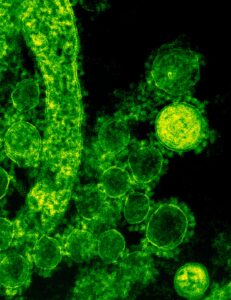 Chronic granulomatous disease (CGD) is a rare primary immunodeficiency disorder that is characterized by deficiencies in the phagocytes capacity to eliminate ingested microorganisms, which frequently causes bacterial and fungal infections. The extensive involvement of the lungs, ribs, and vertebrae that is complicated by multiple abscesses from aspergillosis is rare. In this casa a 13-year-old boy with CGD who experience concurrent pneumonia, rib osteomyelitis, spondylodiscitis, paravertebral, and epidural abscesses as a result of Aspergillus flavus infection with associated computed tomography scan and magnetic resonance imaging findings is reported. Patients with CGD are susceptible to Aspergillus infection. Correct diagnosis based on clinical and paraclinical findings as well as choosing the best treatment regimen is essential for achieving a favorable outcome. Read the full article here.
Chronic granulomatous disease (CGD) is a rare primary immunodeficiency disorder that is characterized by deficiencies in the phagocytes capacity to eliminate ingested microorganisms, which frequently causes bacterial and fungal infections. The extensive involvement of the lungs, ribs, and vertebrae that is complicated by multiple abscesses from aspergillosis is rare. In this casa a 13-year-old boy with CGD who experience concurrent pneumonia, rib osteomyelitis, spondylodiscitis, paravertebral, and epidural abscesses as a result of Aspergillus flavus infection with associated computed tomography scan and magnetic resonance imaging findings is reported. Patients with CGD are susceptible to Aspergillus infection. Correct diagnosis based on clinical and paraclinical findings as well as choosing the best treatment regimen is essential for achieving a favorable outcome. Read the full article here.
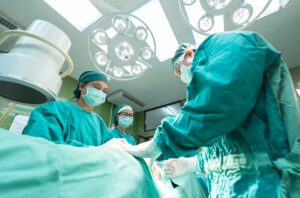 Hereditary Angioedema is a rare disease caused by C1 esterase inhibitor deficiency leading to diffuse and potentially life-threatening oedema formation. Preventing attacks is critical, particularly for patients undergoing cardiac surgery.
Hereditary Angioedema is a rare disease caused by C1 esterase inhibitor deficiency leading to diffuse and potentially life-threatening oedema formation. Preventing attacks is critical, particularly for patients undergoing cardiac surgery.
In this report a case of a 71-years-old woman with a history of Hereditary Angioedema scheduled for open-heart surgery on Cardiopulmonary Bypass is described. Multidisciplinar teamwork and patient-targeted strategy are crucial to obtain a favorable outcome.
Cardiac surgery is a major stressor for Angioedema attacks because of Complement cascade and inflammatory response activation leading to potential life-threatening oedema formation. In literature only few cases of complex open heart surgery under Cardiopulmonary Bypass are described.
Continuous updating and multidisciplinarity are key elements to manage patients with Hereditary Angioedema in cardiac surgery in order to reduce morbidity and mortality. Read the full article here.
Neonatal autoimmune lymphoproliferative syndrome with a novel pathogenic homozygous FAS variant effectively treated with sirolimus
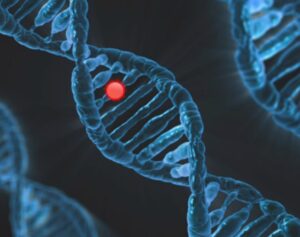 Autoimmune lymphoproliferative syndrome (ALPS) is a rare disease characterized by defective FAS signaling, which results in chronic, nonmalignant lymphoproliferation and autoimmunity accompanied by increased risk of developing malignancies later in life.
Autoimmune lymphoproliferative syndrome (ALPS) is a rare disease characterized by defective FAS signaling, which results in chronic, nonmalignant lymphoproliferation and autoimmunity accompanied by increased risk of developing malignancies later in life.
In this, report a case of a newborn boy with a novel germline homozygous variant identified in the FAS gene, exon 9, c.775del is described, which is considered pathogenic. The consequence of this sequence change is the creation of a premature translational stop signal p.(lle259*), associated with a severe clinical phenotype of ALPS-FAS. The elder brother of the proband is also affected by ALPS and is been found to have the same FAS homozygous variant associated with a severe clinical phenotype of ALPS-FAS, whereas the unaffected parents are heterozygous carriers of this variant. This new variant has not previously been described in population databases (gnomAD and ExAC) or in patients with FAS-related conditions. Treatment with sirolimus effectively improves the patient clinical manifestations with obvious reduction in the percentage of DNTs.
In this report a new ALPS-FAS clinical phenotype-associated germline FAS homozygous pathogenic variant, exon 9, c.775del, that produces a premature translational stop signal p.(lle259*) is described. Sirolimus significantly reduces DNTs and substantially relieves the patient’s clinical symptoms. Read the full article here.
 Pompe disease is a lysosomal storage disease treated with life-long enzyme replacement therapy (ERT). Home-based ERT has been provided in the Netherlands since 2008 because it diminishes the burden of treatment, increases patient flexibility and autonomy, and is thus a more patient-centred approach to ERT.
Pompe disease is a lysosomal storage disease treated with life-long enzyme replacement therapy (ERT). Home-based ERT has been provided in the Netherlands since 2008 because it diminishes the burden of treatment, increases patient flexibility and autonomy, and is thus a more patient-centred approach to ERT.
In this report all Dutch Pompe patients receiving alglucosidase alfa infusions at home are approached to participate in a questionnaire to validate the safety of home-based ERT. Prospective data on symptoms occurring during or within 48 h after infusion and retrospective data on infusion associated reactions (IARs) in the last three months are collected four times during one year.
The data in this study demonstrate that home-based ERT in Pompe disease can be safely implemented as few, mostly mild, symptoms are reported during or after infusion. Insights from this study can be used as a base for implementing home-based ERT in other countries and to further optimize patient care, as unreported mild symptoms do not pose a health risk but may still be relevant to the patient. Read the full article here.
The future of rare disease drug development: the rare disease cures accelerator data analytics platform (RDCA-DAP)
 Rare disease drug development is wrought with challenges not the least of which is access to the limited data currently available throughout the rare disease ecosystem where sharing of the available data is not guaranteed. Most pharmaceutical sponsors seeking to develop agents to treat rare diseases will initiate data landscaping efforts to identify various data sources that might be informative with respect to disease prevalence, patient selection and identification, disease progression and any data projecting likelihood of patient response to therapy including any genetic data. Such data are often difficult to come by for highly prevalent, mainstream disease populations let alone for the 8000 rare disease that make up the pooled patient population of rare disease patients. The future of rare disease drug development will hopefully rely on increased data sharing and collaboration among the entire rare disease ecosystem. One path to achieving this outcome has been the development of the rare disease cures accelerator, data analytics platform (RDCA-DAP) funded by the US FDA. FDA intentions are clearly focused on improving the quality of rare disease regulatory applications by sponsors seeking to develop treatment options for various rare disease populations. As this initiative moves into its second year of operations it is envisioned that the increased connectivity to new and diverse data streams and tools will result in solutions that benefit the entire rare disease ecosystem. Read the full article here.
Rare disease drug development is wrought with challenges not the least of which is access to the limited data currently available throughout the rare disease ecosystem where sharing of the available data is not guaranteed. Most pharmaceutical sponsors seeking to develop agents to treat rare diseases will initiate data landscaping efforts to identify various data sources that might be informative with respect to disease prevalence, patient selection and identification, disease progression and any data projecting likelihood of patient response to therapy including any genetic data. Such data are often difficult to come by for highly prevalent, mainstream disease populations let alone for the 8000 rare disease that make up the pooled patient population of rare disease patients. The future of rare disease drug development will hopefully rely on increased data sharing and collaboration among the entire rare disease ecosystem. One path to achieving this outcome has been the development of the rare disease cures accelerator, data analytics platform (RDCA-DAP) funded by the US FDA. FDA intentions are clearly focused on improving the quality of rare disease regulatory applications by sponsors seeking to develop treatment options for various rare disease populations. As this initiative moves into its second year of operations it is envisioned that the increased connectivity to new and diverse data streams and tools will result in solutions that benefit the entire rare disease ecosystem. Read the full article here.
Beyond current treatment of Fanconi Anemia: What do advances in cell and gene-based approaches offer?
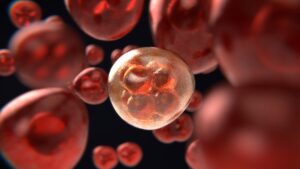 Fanconi anemia (FA) is a rare inherited disorder that mainly affects the bone marrow. This condition causes decreased production of all types of blood cells. FA is caused by a defective repair of DNA interstrand crosslinks and to date, mutations in over 20 genes have been linked to the disease. Advances in science and molecular biology provide new insight between FA gene mutations and the severity of clinical manifestations. In this report the current and promising therapeutic options for this rare disease are highlighted. The current standard treatment for FA patients is hematopoietic stem cell transplantation, a treatment associated to exposure to radiation or chemotherapy, immunological complications, plus opportunistic infections from prolonged immune incompetence or increased risk of morbidity. New arising treatments include gene addition therapy, genome editing using CRISPR-Cas9 nuclease, and hematopoietic stem cell generation from induced pluripotent stem cells. Also the revolutionary developments in mRNA therapeutics as an opportunity for this disease are discussed. Read the full article here.
Fanconi anemia (FA) is a rare inherited disorder that mainly affects the bone marrow. This condition causes decreased production of all types of blood cells. FA is caused by a defective repair of DNA interstrand crosslinks and to date, mutations in over 20 genes have been linked to the disease. Advances in science and molecular biology provide new insight between FA gene mutations and the severity of clinical manifestations. In this report the current and promising therapeutic options for this rare disease are highlighted. The current standard treatment for FA patients is hematopoietic stem cell transplantation, a treatment associated to exposure to radiation or chemotherapy, immunological complications, plus opportunistic infections from prolonged immune incompetence or increased risk of morbidity. New arising treatments include gene addition therapy, genome editing using CRISPR-Cas9 nuclease, and hematopoietic stem cell generation from induced pluripotent stem cells. Also the revolutionary developments in mRNA therapeutics as an opportunity for this disease are discussed. Read the full article here.
Reducing diagnostic delay in hypophosphatasia: a case series of 14 patients presenting to general rheumatology
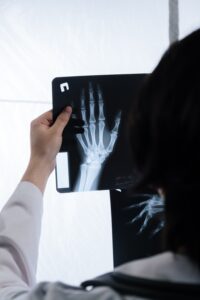 Hypophosphatasia (HPP) is a rare genetic metabolic bone disease that can cause chronic pain and fractures. Its hallmark is a persistently low serum ALP. HPP is now recognised by many osteoporosis specialists, but other specialists, such as rheumatologists and primary care physicians, may be less aware of this condition, causing diagnostic delay and possible harm to these patients.
Hypophosphatasia (HPP) is a rare genetic metabolic bone disease that can cause chronic pain and fractures. Its hallmark is a persistently low serum ALP. HPP is now recognised by many osteoporosis specialists, but other specialists, such as rheumatologists and primary care physicians, may be less aware of this condition, causing diagnostic delay and possible harm to these patients.
In this report retrospectively 14 patients that presented with musculoskeletal pain to general rheumatology clinic at St. George’s Hospital are analysed and are diagnosed subsequently with HPP.
Median diagnostic delay is 13 years. All patients have an ALP below reference range for age. Most common presentation is peripheral joint pain in 85.7% of patients. Axial pain is reported in 64% of patients due to osteoarthritis or spinal stenosis. Fifty percent of patients have a history of long bone pain. Fifty percent have previous fracture(s). A total of 28.6% of patients have psoriatic arthritis.
Patients with HPP can present to rheumatology with musculoskeletal pain, and if a persistently low ALP is confirmed, this may reduce the diagnostic delay of this rare disease. Similar to other rheumatologic patients, musculoskeletal pain in HPP is noted in peripheral joints and in the spine with almost a third of patients having psoriatic arthritis. Pain is also noted in the long bones, a feature consistent with metabolic bone disease. The diagnosis of HPP is also more likely in those patients with a personal or family history of dental disease or arthritis. Read the full article here.
Development and Economic Evaluation of a Patient-Centered Care Model for Children With Duchenne Muscular Dystrophy
 Duchenne muscular dystrophy (DMD) is a rare progressive muscular disease that primarily affects boys. A lack of comprehensive care for patients living with DMD is directly associated with a compromised quality of life for those affected and their caregivers. This disease also has a huge economic impact on families as its treatment requires substantial direct, indirect, and informal care costs.
Duchenne muscular dystrophy (DMD) is a rare progressive muscular disease that primarily affects boys. A lack of comprehensive care for patients living with DMD is directly associated with a compromised quality of life for those affected and their caregivers. This disease also has a huge economic impact on families as its treatment requires substantial direct, indirect, and informal care costs.
This study presents a protocol developed to evaluate the feasibility and efficacy of a patient-centered care model for children with DMD. The care model is designed with the aim to empower families, improve quality of life, and reduce economic burden on their families.
This report outlines a research proposal developed to study the impact of a patient-centered care model for patients with DMD in low- and middle-income countries (LMICs). This study is expected to provide evidence of whether a multicomponent, patient-centric intervention could reduce economic burdens on families and improve their quality of life. The results of this study could guide policy makers and health professionals in low- and middle-income countries to facilitate a comprehensive care program for patients living with DMD. The economic impact of a rare disease is an important consideration to formulate or evaluate any health policy or intervention related to new treatments and financial support scheme. Read the full article here.
 The transition process from paediatric/adolescent to adult medical care settings is of utmost importance for the future health of adolescents with chronic diseases and poses even more difficulties in the context of rare diseases (RDs). Paediatric care teams are challenged to deliver adolescent-appropriate information and structures. In this report, a structured transition pathway, which is patient-focused and adoptable for different RDs, is presented.
The transition process from paediatric/adolescent to adult medical care settings is of utmost importance for the future health of adolescents with chronic diseases and poses even more difficulties in the context of rare diseases (RDs). Paediatric care teams are challenged to deliver adolescent-appropriate information and structures. In this report, a structured transition pathway, which is patient-focused and adoptable for different RDs, is presented.
The transition pathway for adolescents 16 years and older is developed and implemented as part of a multi-centre study in 10 university hospitals in Germany. Key elements of the pathway included: assessment of patients’ disease-related knowledge and needs, training/educational and counselling sessions, a structured epicrisis and a transfer appointment jointly with the paediatric and adult specialist. Specific care coordinators from the participating university hospitals are in charge of organization and coordination of the transition process.
The transition pathway described in this report succeeds to improve health literacy in adolescents with RDs and can be implemented by paediatric care teams in any RD specialty. Patient empowerment is mainly achieved by individualized training and counselling. Read the full article here.
